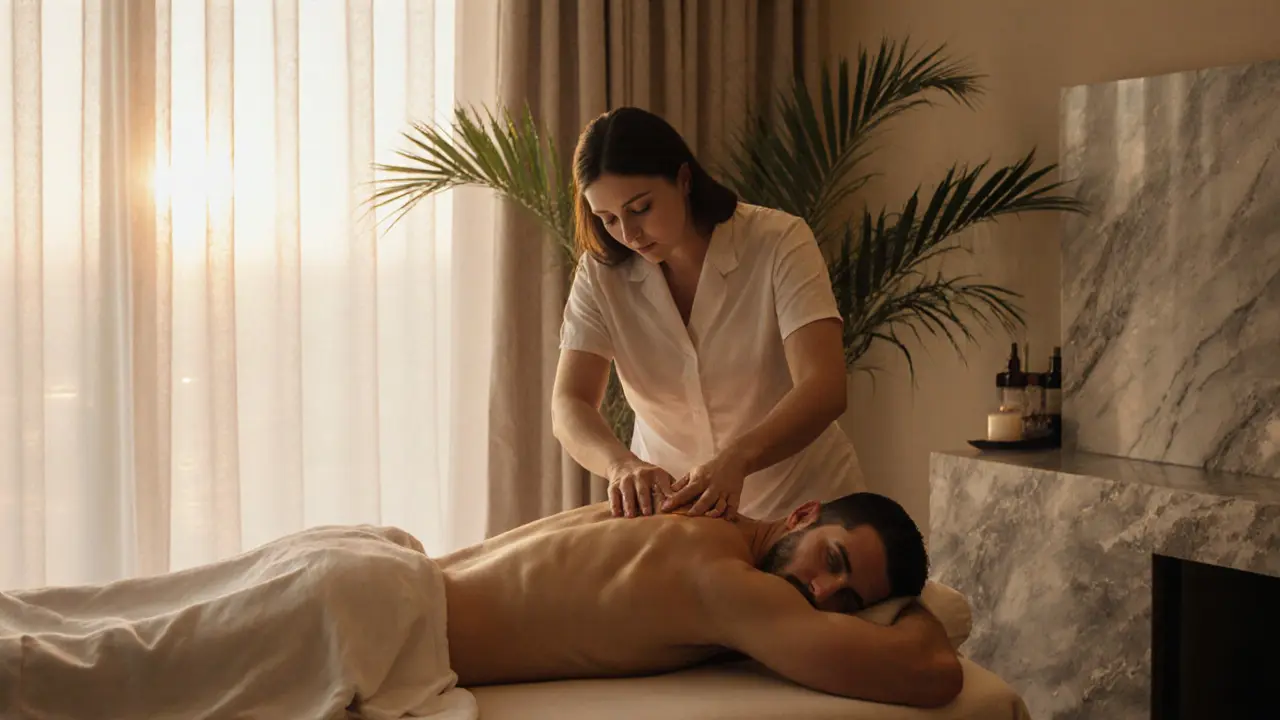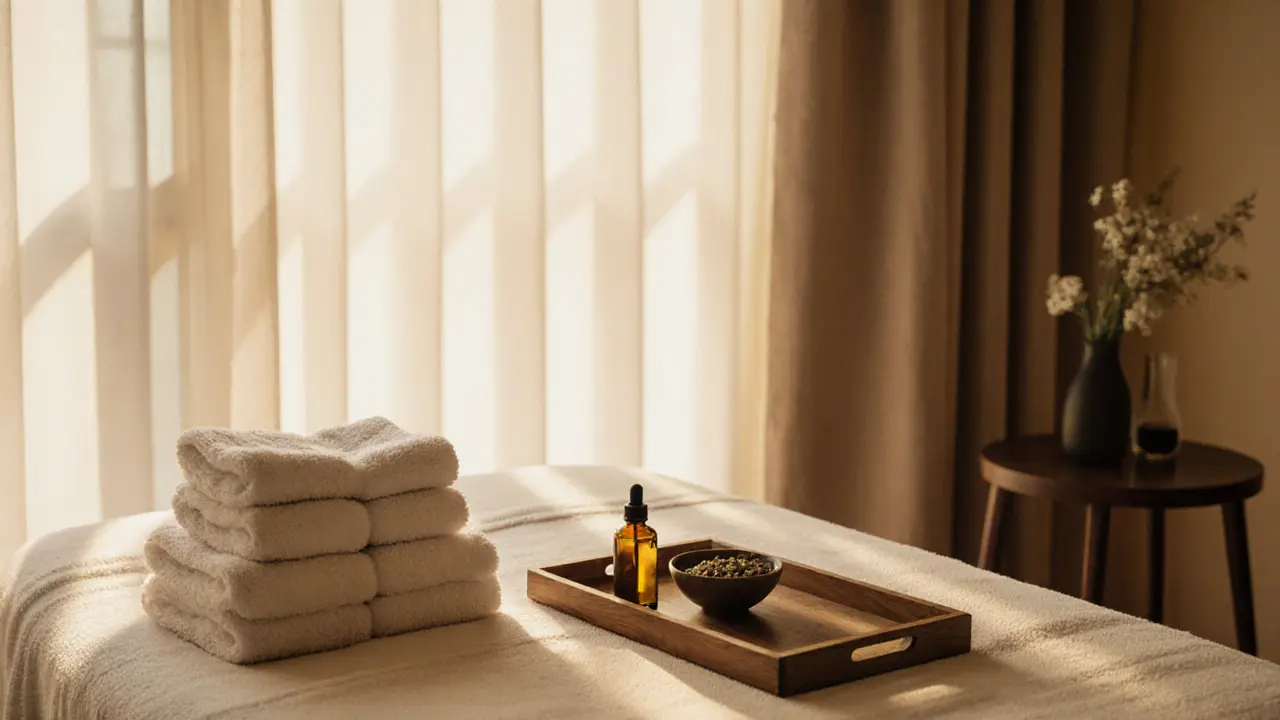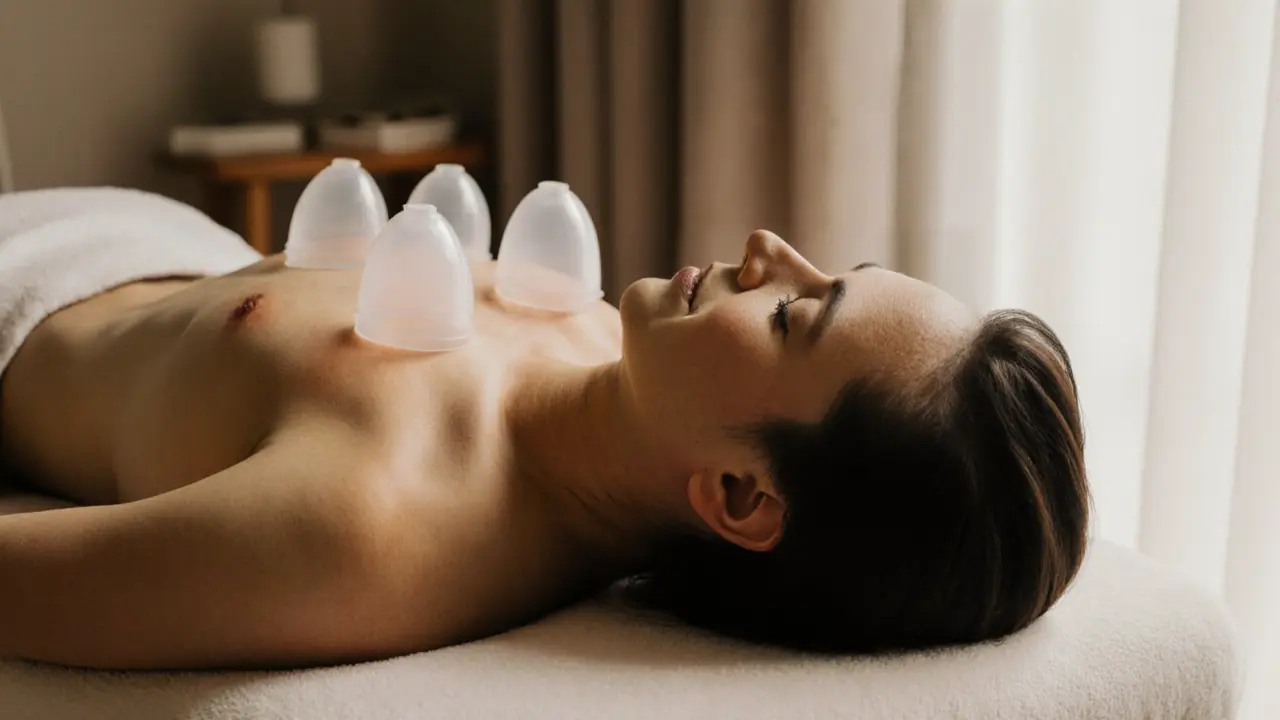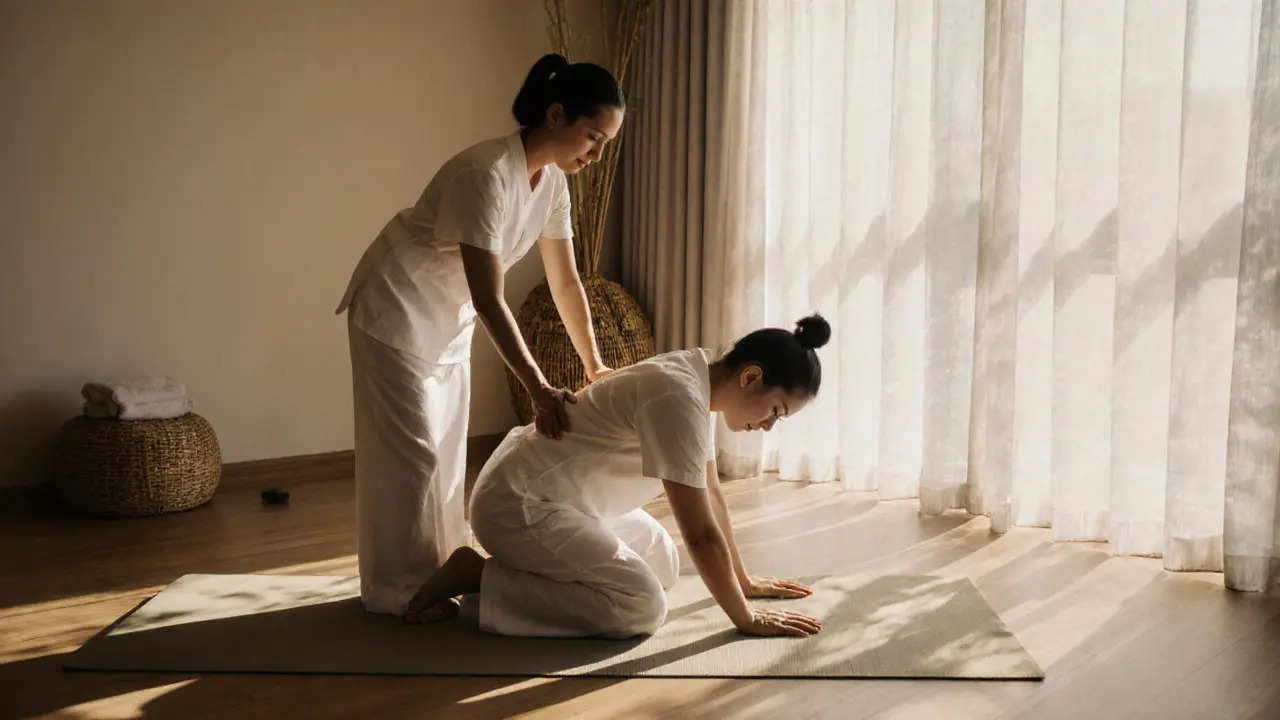Can a massage therapist massage their partner? It’s a question that comes up more often than you’d think-especially in a city like Dubai, where wellness is woven into daily life. You’ve seen the spa ads, the post-work relaxation routines, the couples enjoying side-by-side sessions at luxury resorts. But when it’s your partner-someone you love, someone you’re close to-does the same rule apply? Is it okay to swap the professional setting for the bedroom? Let’s cut through the noise and talk about what really matters: boundaries, ethics, and real-life practicality in a place where massage culture runs deep.
Understanding the Basics of Massage Therapy Ethics
Origins and History
Massage isn’t just about kneading tight shoulders. Its roots stretch back thousands of years-from ancient Chinese healing texts to Egyptian tomb carvings showing bodywork. In the Middle East, including the UAE, massage has long been part of holistic wellness, blending with traditions like hammam rituals and herbal poultices. Modern massage therapy, however, became formalized in the 20th century, especially in Western countries, with certification boards, hygiene standards, and strict codes of conduct. Today, in Dubai, licensed therapists must follow guidelines set by the Dubai Health Authority (DHA), which emphasize professionalism, consent, and clear separation between clinical care and personal relationships.
Core Principles or Components
At its heart, professional massage therapy is built on three pillars: consent, competence, and containment. Consent means the client gives clear, informed permission for touch. Competence means the therapist has trained skills to deliver safe, effective treatment. Containment is the most subtle-but most important-principle. It means keeping the session within professional boundaries. The massage table is a sacred space where vulnerability is trusted, not exploited. When that line blurs, even unintentionally, the therapeutic relationship breaks down.
How It Differs from Related Practices
Many people confuse therapeutic massage with romantic touch or casual cuddling. They’re not the same. Here’s how they differ:
| Practice | Key Feature | Primary Benefit |
|---|---|---|
| Professional Massage | Structured technique, clinical intent, documented protocols | Targeted relief for pain, stress, or mobility issues |
| Partner Touch | Emotional connection, spontaneity, affection-driven | Intimacy, bonding, emotional comfort |
One is a treatment. The other is a gesture of love. Mixing them can muddy the waters-especially when one person is trained to treat the body as a system, not a source of affection.
Who Can Benefit from Professional Massage?
Anyone who’s ever felt the weight of a long workday, a tense flight, or chronic lower back pain. In Dubai, where the pace is fast and the heat is relentless, massage isn’t a luxury-it’s a tool for sustainability. Office workers, athletes, new parents, and even healthcare professionals use it to reset. But the benefit only comes when the therapist stays in their lane. A therapist who massages their partner isn’t necessarily doing anything wrong-but they’re no longer acting as a therapist. They’re acting as a partner. And that’s okay… as long as the roles are clear.
Benefits of Massage for Couples and Individuals
Stress Reduction
Studies show massage lowers cortisol by up to 30% and boosts serotonin and dopamine-natural mood lifters. That’s why so many Dubai professionals book weekly sessions. But here’s the catch: when you’re massaging your partner, your brain is wired differently. You’re thinking about their day, their mood, whether they’re tense because of work or because you forgot to take out the trash. That emotional overlay changes the experience. It’s not bad-it’s just not therapeutic. For true stress relief, a trained therapist can focus purely on the body, without the emotional noise.
Enhanced Functionality
Massage improves circulation, reduces muscle stiffness, and helps with recovery. A professional therapist knows how to target trigger points, adjust pressure, and use techniques like myofascial release or neuromuscular therapy. Your partner might not. They might press too hard, miss key areas, or accidentally aggravate an old injury. That’s not because they don’t care-it’s because they haven’t trained to read the body the way a therapist does.
Emotional Well-Being
Touch releases oxytocin, the bonding hormone. So yes, a gentle back rub from your partner can make you feel loved and safe. That’s powerful. But when you mix that with professional expectations-like “Can you fix my sciatica?” or “Why isn’t this working like your last session?”-it can create pressure. Relationships thrive on emotional reciprocity, not performance. If massage becomes a task instead of a gift, it can strain the connection.
Practical Applications
Think of it this way: you wouldn’t ask your dentist to fix your kid’s tooth at home just because you’re family. Same logic applies here. For daily relaxation, partner touch is perfect. For deep tissue work, injury recovery, or chronic pain-leave it to the pros. Many Dubai couples alternate: one week, the therapist gives a session; the next week, they give each other a simple oil rub after a bath. It keeps both roles healthy.
| Benefit | Description | Impact |
|---|---|---|
| Targeted Pain Relief | Therapist identifies and treats specific muscle dysfunctions | Reduces chronic discomfort, improves mobility |
| Emotional Bonding | Partner touch builds intimacy and trust | Strengthens relationship, reduces loneliness |
| Consistency | Professional sessions follow a structured plan | Tracks progress, prevents regression |
What to Expect When Engaging with Massage
Setting or Context
In Dubai, massage happens everywhere-from high-end spas in Burj Khalifa hotels to quiet home studios in Jumeirah. The setting matters. A professional space has white noise, dim lighting, clean linens, and no distractions. At home, there’s the dog barking, the fridge humming, or your partner checking their phone. The environment shapes the experience. A therapist’s office is designed to help you disconnect. Your living room? Not so much.
Key Processes or Steps
A professional session follows a clear flow: intake (asking about pain, injuries), positioning, technique selection, pressure adjustment, and closure. A partner massage? Often starts with “Hey, can you rub my shoulders?” and ends with “That felt good, thanks.” No intake. No follow-up. No structure. That’s fine for affection-but not for healing.
Customization Options
Therapists tailor sessions based on your needs: deep tissue for athletes, gentle Swedish for anxiety, prenatal for expectant mothers. Your partner might not know the difference. They might use the same pressure for everything. That’s not personal-it’s lack of training. A good therapist adjusts on the fly. A partner? They’re guessing.
Communication and Preparation
Before a session, a therapist asks: “Do you have any injuries?” “What pressure feels right?” “Any areas to avoid?” At home, you might say, “My back’s tight.” That’s it. The difference? A professional creates safety through questions. A partner creates safety through love. Both work-but in different ways.

How to Practice or Apply Massage Responsibly
Setting Up for Success
If you want to give your partner a massage at home, keep it simple. Use a quiet room, warm oil (coconut or almond), soft music, and no screens. Set a 20-minute timer. No expectations. No goals. Just presence. You’re not fixing anything-you’re showing up.
Choosing the Right Tools/Resources
For home use, a good massage oil, a clean towel, and a firm surface (like a mat on the floor) are enough. Skip the gadgets. You don’t need a vibrating roller or electric massager. Your hands are the best tool. If you want to learn more, check out DHA-approved online courses or local workshops in Dubai that teach basic self-care techniques for couples.
Step-by-Step Guide
- Ask your partner if they’d like a massage-don’t assume.
- Set a calm space: dim lights, warm room, no distractions.
- Use a small amount of oil-warm it between your palms first.
- Start with the back, using long, slow strokes. Keep pressure light at first.
- Ask: “Does this feel okay?” every few minutes.
- End with a gentle hug. No feedback required. Just be there.
Tips for Beginners or Couples
Don’t try to be a therapist. Don’t aim for perfection. Just be present. If your partner says, “That’s too hard,” stop. If they fall asleep, that’s a win. And if they say, “Can you do my neck?”-go ahead. But remember: this isn’t a job. It’s a gift.
Safety and Ethical Considerations
Choosing Qualified Practitioners/Resources
If you’re seeking professional care, always check a therapist’s DHA license. In Dubai, you can verify credentials through the DHA portal. Avoid unlicensed providers-even if they’re cheap or recommended by a friend. Your health isn’t worth the risk.
Safety Practices
Hygiene and consent are non-negotiable. Here’s what to always do:
| Practice | Purpose | Example |
|---|---|---|
| Use clean linens | Prevent skin infections | Change sheets after every client |
| Ask for consent | Respect personal boundaries | “Can I work on your lower back?” |
| Avoid sensitive areas | Prevent discomfort or injury | Never massage bruises, open wounds, or recent scars |
Setting Boundaries
Even with your partner, boundaries matter. If you’re a therapist, say: “I love giving you massages at home, but I don’t do clinical work on you. Let’s keep that separate.” If you’re the partner, say: “I appreciate you helping me, but I don’t want you to feel like you have to fix me.” Clear communication prevents resentment.
Contraindications or Risks
Don’t massage if there’s an active injury, fever, blood clot, or recent surgery. Also avoid deep pressure if you have osteoporosis, varicose veins, or are pregnant without clearance. If you’re unsure, consult a doctor. It’s not overcautious-it’s responsible.
Enhancing Your Experience with Massage
Adding Complementary Practices
Pair massage with deep breathing or quiet time afterward. In Dubai’s busy rhythm, five minutes of stillness after a session can double the benefit. Light stretching, hydration, or even a warm cup of mint tea helps the body integrate the work.
Collaborative or Solo Engagement
Some couples do mutual massage nights once a week. Others prefer solo sessions with professionals. Neither is better. It’s about what fills your cup. If you’re both tired and just want to touch each other without words-go for it. If you need real pain relief, book a pro.
Using Tools or Props
A foam roller or massage ball can help release knots between sessions. Keep one by your bed. Use it for 5 minutes before sleep. It’s not a replacement for touch-but it’s a great helper.
Regular Engagement for Benefits
One massage a month can make a difference. Two? Even better. Consistency beats intensity. A little regular care prevents big problems down the line.
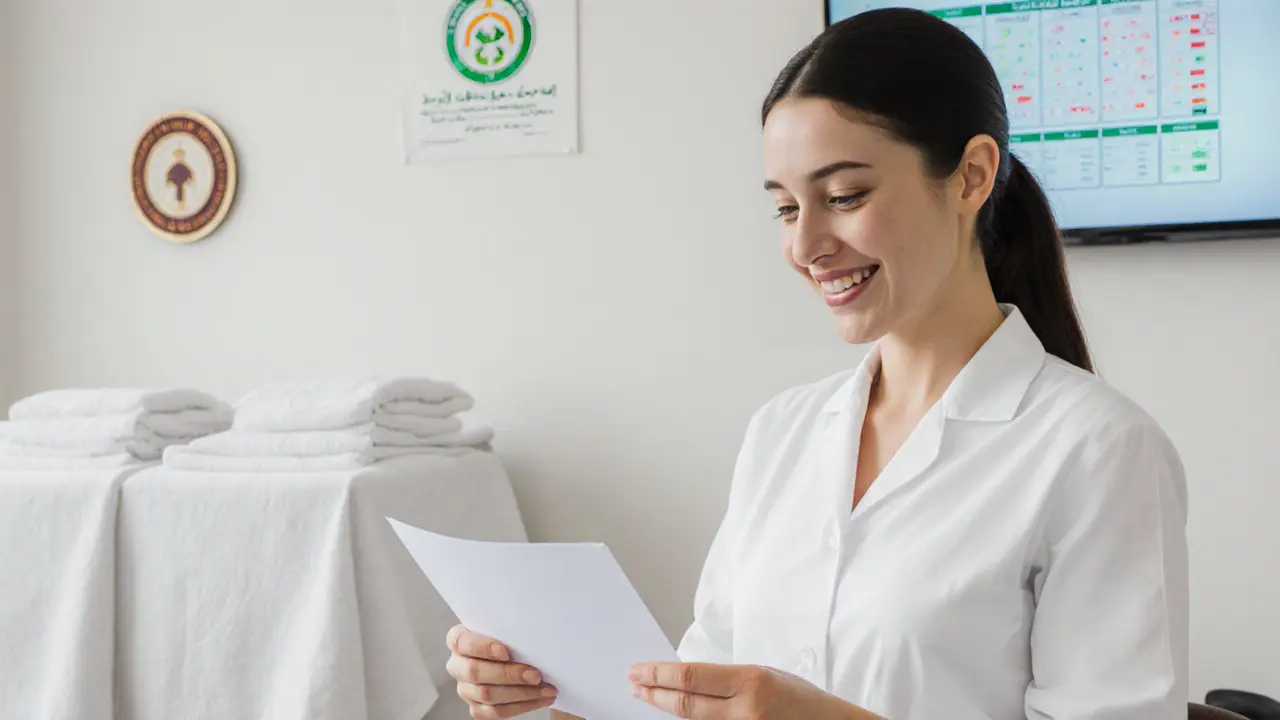
Finding Resources or Experts for Massage in Dubai
Researching Qualified Practitioners
Look for therapists with DHA certification. Read reviews on Google or Zomato. Ask for referrals from friends who’ve had real results-not just nice experiences. A good therapist listens more than they talk.
Online Guides and Communities
Follow Dubai-based wellness influencers who focus on evidence-based practices. Join Facebook groups like “Dubai Wellness Network” or “Healthy Dubai Families.” These are real communities where people share honest experiences.
Legal or Cultural Considerations
In Dubai, massage is culturally accepted-but always in private, professional settings. Public massage or overtly intimate gestures in shared spaces can draw unwanted attention. Respect local norms. What’s normal in a spa is not always okay at a beach or mall.
Resources for Continued Learning
Check out “The Massage Therapy Bible” by David G. Simons or online courses from the International Massage Association. Many Dubai spas offer free intro workshops. Take one. You’ll learn more than you think.
FAQ: Common Questions About Massage Therapists and Partners
Can a massage therapist legally massage their partner in Dubai?
Yes, there’s no law against it. But the Dubai Health Authority expects therapists to maintain professional boundaries. If you’re giving your partner a massage as a loved one, that’s fine. If you’re calling it a “therapy session” and charging or documenting it, that crosses a line. Keep personal touch personal, and professional work professional.
What happens if a therapist massages their partner during a session?
If a therapist does this during a paid session, it’s a serious ethics violation. It’s not about attraction-it’s about trust. Clients pay to be treated without emotional entanglement. If a therapist blurs that line, they risk losing their license. Always choose a therapist who respects boundaries. If something feels off, speak up.
Is it better to get a massage from a partner or a professional?
It depends on your goal. If you want to feel loved, relaxed, and connected-your partner is perfect. If you have chronic pain, tight muscles, or need targeted relief-a professional is the better choice. You don’t have to choose one over the other. Use both. Let your partner give you cuddles. Let your therapist fix your posture. They serve different needs.
How can couples enjoy massage together without mixing roles?
Set clear expectations. Say: “I’m giving you a relaxing rub tonight-not therapy.” Use simple strokes, no pressure goals. Make it a ritual, not a treatment. You can even take a couples’ massage class together at a local spa. Learn basic techniques so you both feel confident and safe. It turns touch into a shared language, not a job.
Can massage improve a relationship?
Yes-but only if it’s done with care. Regular, non-sexual touch builds trust and reduces stress. Studies show couples who touch each other daily-even briefly-report higher satisfaction. The key is intention. A 10-minute back rub with no agenda, no pressure, no expectations? That’s powerful. Don’t turn it into a chore. Let it be a quiet moment of connection.
Conclusion: Why This Matters in Dubai
A Path to Balance
Massage isn’t about who’s doing it-it’s about why. A therapist’s hands are trained to heal. A partner’s hands are trained to love. Both are valuable. Both are needed. In a city that never sleeps, finding balance matters. Don’t force your relationship to be a clinic. Don’t expect your therapist to be your emotional anchor. Honor both roles. That’s how you stay healthy-body and heart.
Try It Mindfully
If you’re thinking of giving your partner a massage this weekend-go ahead. Warm the oil. Turn off your phone. Just be there. And if you need real relief? Book a pro. There’s no shame in that. In fact, it’s smart.
Share Your Journey
Tried giving your partner a massage? Or had a therapist who crossed a line? Share your story in the comments. Your experience might help someone else find their balance.
Some links may be affiliate links, but all recommendations are based on research and quality.
Word count: 1,728
Suggested Images
- A couple lying side-by-side on a massage table in a softly lit Dubai spa room, one gently massaging the other’s shoulders.
- A close-up of hands applying warm oil to a back, with blurred luxury spa decor in the background.
- A licensed DHA-certified massage therapist in professional attire, smiling while reviewing a client intake form.
- A minimalist home setup: a mat, a bottle of coconut oil, and a candle-no equipment, just human touch.
- A diverse group of Dubai residents smiling after a couples’ massage workshop at a local wellness center.
Suggested Tables
- Comparison of Professional Massage vs. Partner Touch
- Key Benefits of Professional vs. Partner Massage
- Essential Safety Practices

